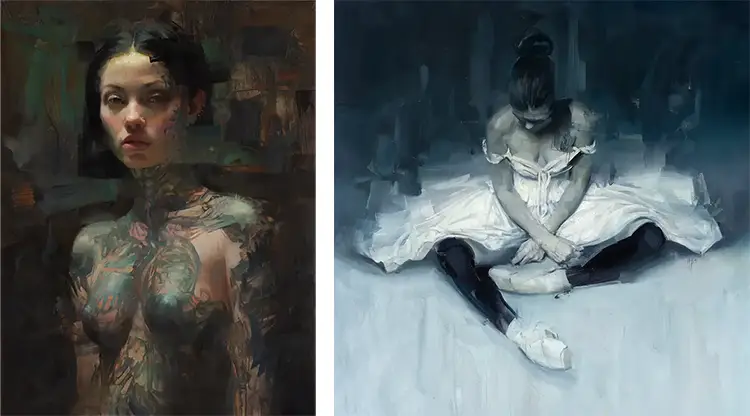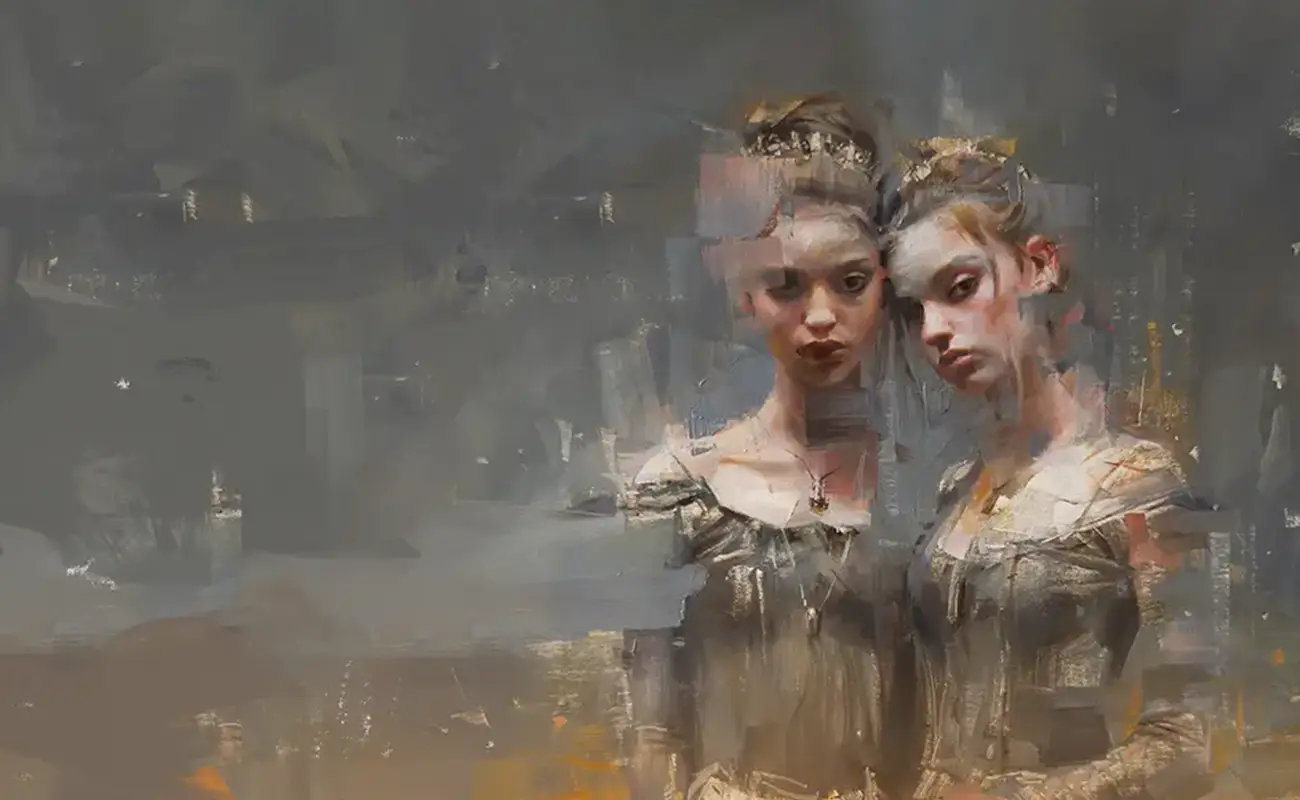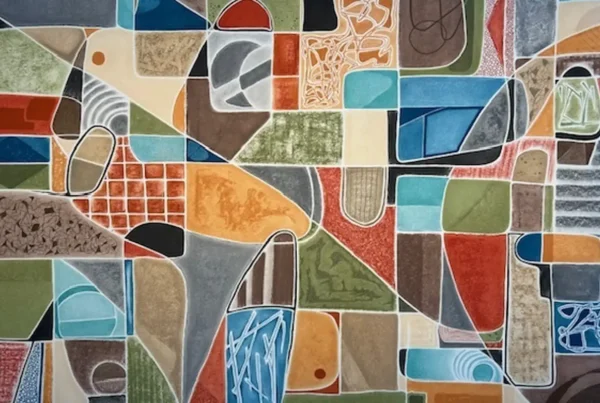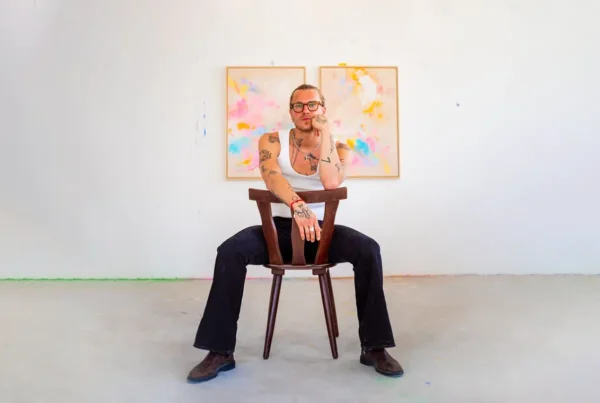The Turning Point: When the Brush Took Over
For nearly three decades, Torsten Wolber built a successful career as a professional illustrator, fulfilling a childhood dream that had once seemed out of reach. Yet even amid the fast-paced world of commercial art, a quieter impulse lingered—one that pulled not toward precision and deadlines, but toward spontaneity and personal vision. Being a painter had long remained a dream, one that grew stronger over time. Whether he would have ever pursued it remained uncertain—until a night that changed everything. When a burglar entered the bedroom while he and his wife were sleeping, nearly knocking him unconscious, Wolber was left confronting the fragility of time. It was then, at the age of 55, that he made a dramatic, irreversible decision to step away from illustration and pursue painting with full conviction. That decision marked the beginning of a bold, unfiltered exploration into what it means to create without external expectations.
This leap wasn’t entirely without foundation. Wolber had spent a decade experimenting with plein air painting, cultivating a relationship with light, form, and immediacy. Still, the transition to painting as a primary vocation required more than technical adaptation. He found that, unlike illustration, painting demanded a relinquishing of control. It wasn’t about delivering a polished result, but rather about surrendering to the process itself. The act of painting became both path and destination. Recording many of his sessions on video, he began to analyze how resonance between artist and viewer is formed—not through perfection, but through raw, intuitive connection.
In the years since, Wolber has established himself not only as a painter but as a visual thinker navigating the blurred boundary between chaos and intention. Living in Cologne with his wife, a puppeteer, he now commits entirely to oil painting, using it as a medium to express what he describes as “fleeting impressions” and psychological nuance. By allowing each painting to evolve dynamically, he rejects formula in favor of discovery, trusting that truth often arrives in the unplanned, the unresolved, and the emotionally charged.
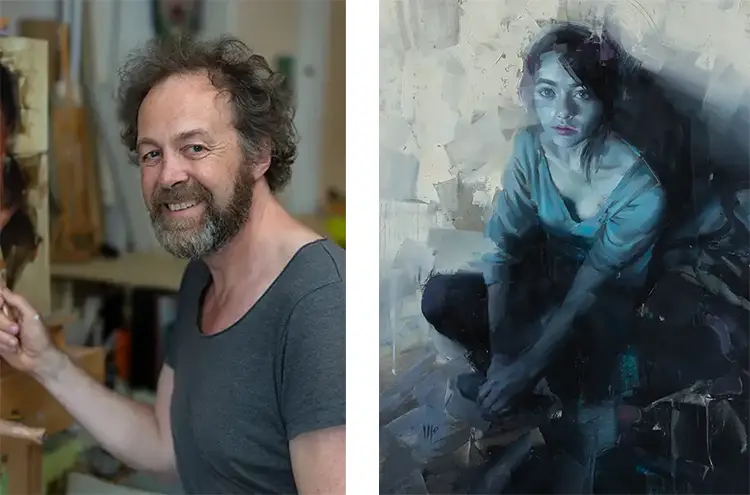
Torsten Wolber: Painting the Unspoken
Wolber’s artistic approach is steeped in the expressive language of alla prima oil painting, yet he interprets the technique not through classical rigidity, but through instinct and experimentation. His brushwork is bold and gestural, revealing figures that seem to emerge from the very act of being painted. Faces take shape not in isolation but in contrast to their fractured surroundings—smears of color, directional strokes, and raw edges that give his compositions a sense of immediacy and unresolved energy. In his hands, painting becomes a verb rather than a noun—a process of becoming, not merely depicting.
Drawing influence from masters like Richard Schmid and John Singer Sargent, Wolber positions himself within a painterly tradition while actively subverting its constraints. He avoids tidiness and certainty, opting instead for ambiguity and tension. His portraits often contain areas that feel deliberately incomplete, evoking motion, memory, or internal emotion rather than external likeness. These works are not about photographic resemblance, but about emotional resonance—moments suspended between recognition and abstraction, clarity and mystery.
This fluid, reactive style is anchored by a strong understanding of form and anatomy, built during his years as an illustrator. However, the strength of his work lies in how he uses that foundation not to reinforce realism, but to unravel it. Color becomes a critical narrative tool in this context. Naturalistic tones are often juxtaposed with unexpected hues—cool blues that whisper detachment, fiery reds that scream urgency, or sudden electric strokes that introduce psychological contrast. His canvases resist quietude; they confront the viewer with a presence that feels both intimate and ungraspable.

A Process Fueled by Instinct and Imperfection
At the core of Wolber’s methodology is a commitment to remaining as open as possible for as long as possible during the painting process. He deliberately avoids premature decision-making, preferring to stay in a state of fluid exploration. Working primarily in large formats, he focuses on the overall form first, leaving room for detail only when it serves the emotional weight of the piece. Using broad brushes and wedges, he manipulates wet oil paint in a single continuous session, embracing unpredictability and improvisation as essential elements rather than obstacles.
This approach demands a specific kind of focus—one that bypasses analytical thinking in favor of visceral response. Wolber often imposes time pressure on himself, not as a technical constraint, but as a psychological tool. The clock becomes a silent collaborator, encouraging him to act before the intellect can overtake intuition. Each canvas is a negotiation between chaos and order, and the more he can silence internal noise, the more clearly the work begins to speak. In this way, painting becomes not just a technical act, but a form of mindfulness—a way to access a deeper layer of awareness.
Interestingly, Wolber’s outdoor painting practice also played a crucial role in shaping this philosophy. Beginning around 2010, without access to a studio, he began painting en plein air and quickly realized the difficulty of capturing light and atmosphere in real time. It was a humbling experience, but one that sharpened his observational skills and deepened his respect for spontaneity. The discipline and insight gained from those years continue to inform his studio work today, where he applies similar principles of presence, speed, and fluidity to his emotionally charged portraits.
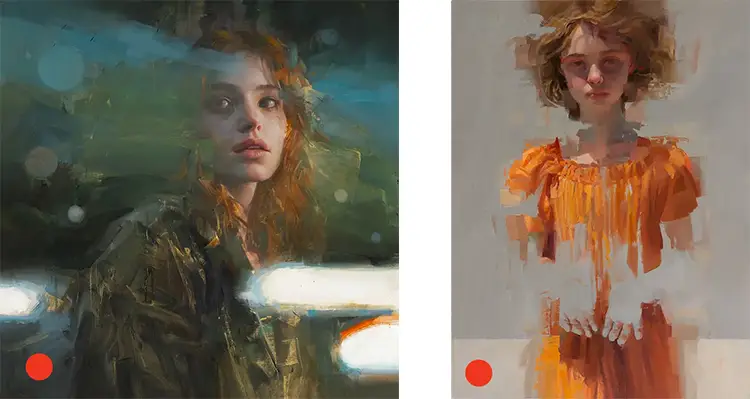
Torsten Wolber: From Craft to Calling
What began as a dream job in illustration ultimately became a stepping stone to something more personal, more uncertain, and infinitely more fulfilling. For years, Wolber operated in the structured world of client briefs and deadlines, where creativity often bowed to efficiency. He left that world behind before artificial intelligence began to impact the illustration industry—without any awareness of what was coming. In hindsight, it was sheer luck that he made the leap when he did. Rather than compete with machines, he ended up reconnecting with the one thing AI could never replicate: the human experience of risk, imperfection, and creative freedom. In doing so, he redefined his relationship to art itself.
Letting go of commercial work was not just a financial decision, but a profound psychological recalibration. Years of creating on demand had instilled in him a voice that wasn’t his own—a voice of expectation, not expression. When he finally stopped accepting commissions in 2023, he experienced a kind of artistic unburdening. Only then did he fully inhabit his identity as a painter, no longer divided between profession and passion. With that freedom came clarity: he no longer paints to impress, but to express. His work is now driven by curiosity, vulnerability, and the desire to give form to something invisible but deeply felt.
For those seeking to follow a similar path, Wolber offers advice grounded in his own experience: allow the work to guide you, not the other way around. Don’t wait for the perfect moment, because it never arrives. The urge to create is precious, and it deserves space even in the face of uncertainty or doubt. Style, he argues, isn’t something to be manufactured; it is something that emerges through persistence and honesty. The true task of the artist is not to conform, but to listen—to the material, to the emotion, and to the quiet impulse that says: start now.
